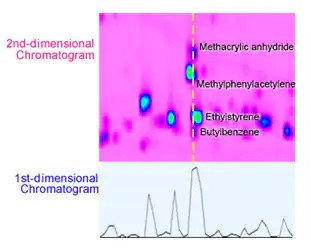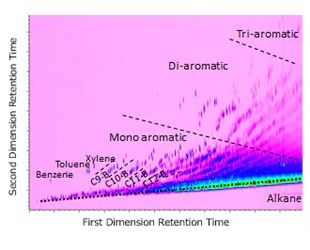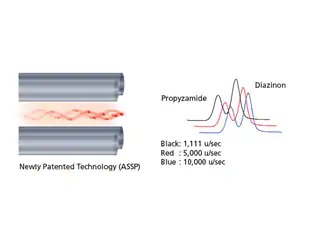Peaks with similar boiling points that could not be separated adequately with one-dimensional chromatography can now be separated based on differences in polarity.
Comprehensive GCxGC System
Comprehensive GC-MS(GC×GC-MS) System

Shimadzu’s Comprehensive GC-MS (GCxGC-MS) System is suited for a variety of applications, including analysis of complex matrices such as a natural products that are hard analyze by conventional GC or GC-MS, and grouping analysis based on two-dimensional chromatograph patterns.
Features
-
-
GCxGC provides image patterns that can be correlated to compound structure; this capability is especially useful for grouping analysis of mixtures containing many components.
-
The rod bias voltage is automatically optimized during high-speed data acquisition, which minimizes sensitivity deterioration during high-speed...
Videos
-
Nexera-e (Comprehensive Two-Dimensional Liquid Chromatograph)
-
Comprehensive 2DLC: Concepts, Potential, Applications
-
Shimadzu new products for pharmaceutical industry at Pittcon 2014





